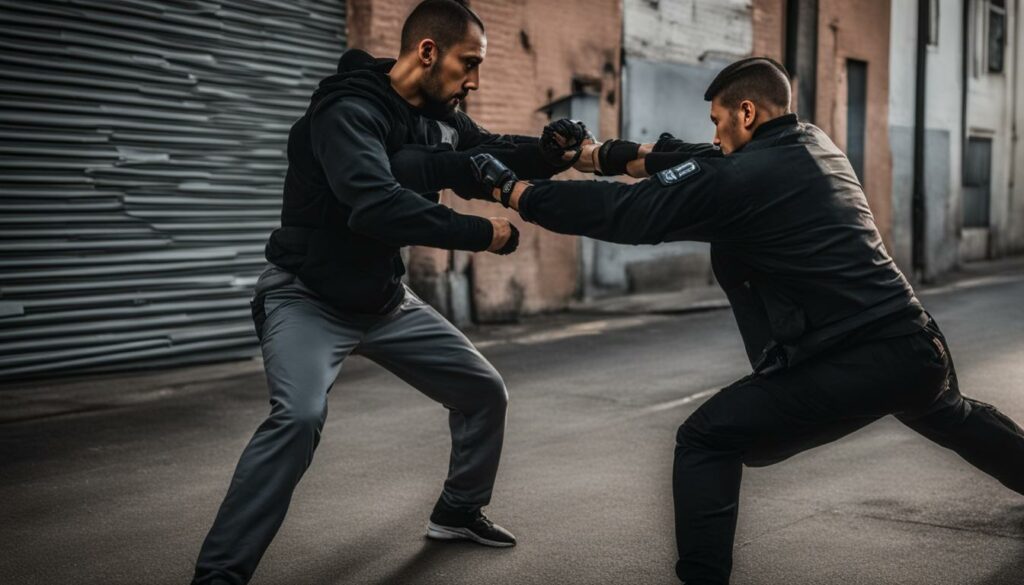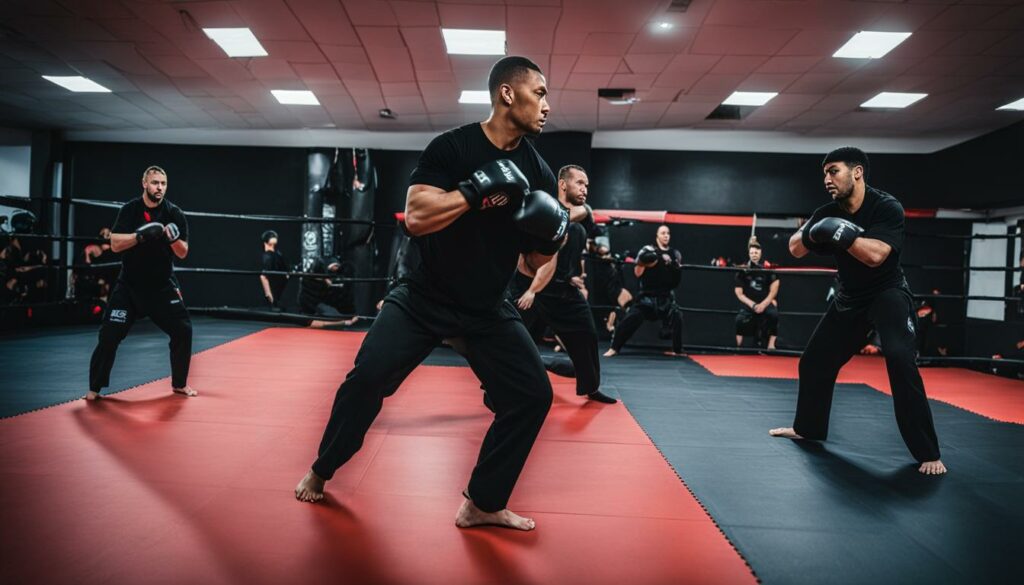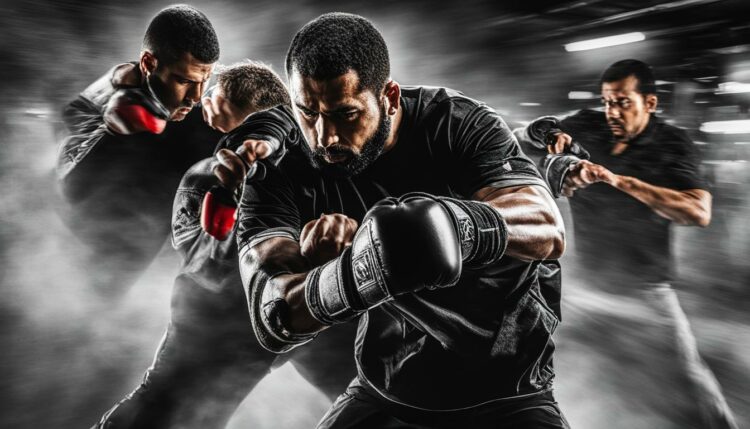Krav Maga, a powerful martial art known for its practical self-defense techniques, has become increasingly popular in recent years. However, there is a common question among martial arts enthusiasts: Is there kata in Krav Maga?
Kata, a term often associated with traditional martial arts like Karate, refers to a choreographed series of movements that practitioners practice and memorize. In the case of Krav Maga, the focus is mainly on real-life self-defense scenarios rather than traditional forms or katas.
While Krav Maga has its own unique training methods and techniques, it does not typically include the practice of katas as seen in other martial arts disciplines.
Understanding the Principles of Krav Maga
Krav Maga is a self-defense system that prioritizes practical techniques and real-life scenarios. Developed for the Israeli Defense Forces, it focuses on teaching individuals how to defend themselves effectively and efficiently. The principles of Krav Maga revolve around neutralizing threats, utilizing instinctive movements, and harnessing the body’s natural reflexes.
In Krav Maga training, practitioners learn to quickly neutralize threats by targeting vulnerable areas of the body. The techniques are designed to be simple and easy to learn, ensuring that individuals of all ages and physical abilities can effectively defend themselves. Unlike traditional martial arts that emphasize predetermined movements and choreographed forms, Krav Maga teaches students to react instinctively and adapt to the specific circumstances they may face in real-life situations.
The Krav Maga system incorporates various techniques from other martial arts disciplines, but the primary focus remains on self-defense. This practical approach sets Krav Maga apart from styles that prioritize intricate forms and katas. Instead, Krav Maga training emphasizes repetition and muscle memory, enabling students to execute techniques quickly and effectively when confronted with a threat.
Table: Principles of Krav Maga
| Principle | Description |
|---|---|
| Neutralizing threats | Focusing on techniques that incapacitate attackers |
| Utilizing instinctive movements | Training the body to react without conscious thought |
| Using natural reflexes | Capitalizing on the body’s innate defensive mechanisms |
Overall, Krav Maga’s principles and training methods make it an effective system for self-defense. Its practicality and emphasis on real-life scenarios have made it a popular choice for individuals seeking to learn how to protect themselves in today’s world.
The Emphasis on Real-Life Scenarios

Krav Maga differentiates itself from other martial arts by its strong emphasis on real-life scenarios. Unlike traditional forms that focus on predetermined movements, Krav Maga trains practitioners to react instinctively and adapt to specific situations they may encounter in everyday life.
Practitioners of Krav Maga are trained to handle various attacks such as grabs, chokes, and strikes. The goal is to quickly neutralize the threat and escape from the situation safely. This practical approach makes Krav Maga an effective self-defense system for real-world encounters, ensuring the safety and well-being of individuals in real-life combat situations.
By training in realistic scenarios, practitioners develop the skills needed to defend themselves in actual dangerous situations. Through repetitive drills, students learn to react quickly and efficiently, enabling them to effectively defend against real-life threats. The emphasis on practical techniques and real-life scenarios sets Krav Maga apart, making it a valuable self-defense system for individuals seeking practical and effective methods of protection.
Table: Comparison of Krav Maga with Traditional Martial Arts
| Aspect | Krav Maga | Traditional Martial Arts |
|---|---|---|
| Focus | Real-life scenarios and self-defense | Forms and katas |
| Training | Emphasizes practical techniques and repetition | Emphasizes perfecting forms and katas |
| Movement | Instinctive and adaptive | Prescribed and choreographed |
| Goal | Neutralize threats and escape safely | Develop discipline and physical fitness |
| Application | Real-world self-defense scenarios | Traditional martial arts competitions |
Practical Techniques for Self-Defense
Krav Maga employs a wide range of practical techniques that are specifically designed for self-defense in real-life situations. Unlike traditional martial arts that focus on complex forms and katas, Krav Maga emphasizes simplicity, effectiveness, and adaptability. By targeting vulnerable areas of the body and utilizing strikes, kicks, knees, elbows, clinches, and ground fighting, practitioners are equipped with the skills necessary to incapacitate an attacker and create opportunities for escape.
One of the key advantages of Krav Maga’s self-defense techniques is their practicality. They are based on instinctive movements and reflexes, allowing practitioners to react quickly and effectively in high-stress situations. The techniques are not meant to be performed in a precise and rehearsed manner but rather to flow naturally, adapting to the specific circumstances at hand. This makes Krav Maga highly effective for individuals of all ages and physical abilities.
Table: Summary of Krav Maga Self-Defense Techniques
| Technique | Description |
|---|---|
| Strikes | Powerful punches and kicks aimed at vulnerable areas of the body, such as the face, throat, and groin. |
| Defenses | Techniques to neutralize and counter incoming attacks, including blocks, parries, and redirects. |
| Clinches | Close-range grappling techniques used to control an opponent’s movement and deliver strikes or techniques. |
| Ground Fighting | Skills and techniques to defend oneself while on the ground, including escapes, submissions, and strikes. |
“Krav Maga’s practical self-defense techniques provide individuals with the ability to effectively defend themselves in real-life scenarios, making it a highly sought-after martial art for personal protection.”
By focusing on practical techniques, Krav Maga equips individuals with the skills they need to protect themselves in dangerous situations. It offers a realistic and efficient approach to self-defense that empowers practitioners to overcome threats and ensure their personal safety.
The Efficiency of Krav Maga Training

Krav Maga training is known for its efficiency and effectiveness. The system is designed to be practical and accessible to individuals of all ages and physical abilities. The training methods focus on developing the skills necessary to defend oneself in real-life situations, rather than on perfecting complicated forms or katas. The emphasis is on repetition and muscle memory to ensure that the techniques can be executed quickly and effectively when needed.
Unlike traditional martial arts that may require years of training to become proficient, Krav Maga offers a streamlined approach to self-defense. The techniques taught in Krav Maga are practical and easy to learn, allowing students to quickly acquire the necessary skills to defend themselves. This efficiency in training makes Krav Maga an ideal choice for individuals who want to learn self-defense but may not have the time or desire to commit to long-term martial arts training.
In Krav Maga, the focus is on real-life scenarios and practical techniques. Instead of spending hours practicing choreographed movements, students learn how to react instinctively and adapt to the specific circumstances they may encounter. This training approach ensures that individuals are prepared to defend themselves in unpredictable situations, where there may not be time to think or plan a response. By focusing on practicality and efficiency, Krav Maga training equips individuals with the skills they need to confidently protect themselves.
Benefits of Krav Maga Training:
- Effective self-defense techniques for real-life situations
- Accessible to individuals of all ages and physical abilities
- Streamlined approach to learning and mastering self-defense
- Develops self-confidence and situational awareness
- Improves physical fitness and overall wellness
“Krav Maga training equips individuals with practical self-defense skills that can be used immediately. Its efficiency and effectiveness make it a popular and valuable training system for those looking to protect themselves in real-world situations.” – Krav Maga instructor
Overall, the efficiency of Krav Maga training lies in its practicality, accessibility, and focus on real-life scenarios. By teaching individuals to react instinctively and adapt to unpredictable situations, Krav Maga equips students with the skills and confidence they need to effectively defend themselves in the modern world. Whether you are a beginner or looking to enhance your existing self-defense skills, Krav Maga offers a time-efficient and results-driven training system.
The Evolution of Krav Maga
Krav Maga has a rich history of development since its inception in the Israeli Defense Forces. Over time, the system has evolved and gained recognition worldwide, leading to the emergence of different branches and organizations, each with its own approach and curriculum. While there may be variations in training methods and techniques within the Krav Maga community, the core principles of practical self-defense and the focus on real-life scenarios remain consistent.
A key aspect of the evolution of Krav Maga is its adaptability and incorporation of techniques from various martial arts. As the system expanded outside of its military origins, practitioners began to integrate effective techniques from disciplines such as boxing, wrestling, and judo. This continuous development ensures that Krav Maga remains a dynamic and evolving self-defense system, keeping up with the ever-changing nature of real-life conflicts.
Furthermore, the evolution of Krav Maga extends beyond its technical aspects. The system’s growth has also been driven by the establishment of official organizations and the certification of instructors. This ensures that the training provided is of high quality and adheres to the core principles of Krav Maga. It also allows for the dissemination of the system to a wider audience, making it more accessible for individuals seeking effective self-defense training.
The Influence of Krav Maga
“Krav Maga’s evolution has had a significant impact on the world of martial arts and self-defense. Its practical approach and emphasis on real-life scenarios have challenged traditional concepts and sparked interest among practitioners from various disciplines. The effectiveness of Krav Maga techniques in real-world situations has gained recognition, leading to its incorporation into the training of military and law enforcement personnel worldwide.”
In summary, Krav Maga’s evolution showcases its ability to adapt and refine its techniques over time. This continuous development, driven by the integration of techniques from various martial arts, establishment of official organizations, and its effectiveness in real-life scenarios, has cemented Krav Maga’s position as a leading self-defense system. As new challenges arise, Krav Maga will continue to evolve and provide individuals with practical tools to defend themselves in the modern world.
Conclusion – The Practicality of Krav Maga
When it comes to practical and efficient self-defense training, Krav Maga stands out as a martial art system that prioritizes real-life scenarios and practical techniques. While it may not incorporate katas like traditional martial arts, Krav Maga focuses on developing the skills necessary to defend oneself effectively.
With its emphasis on real-life application, Krav Maga equips individuals with the ability to handle various attacks and situations they may encounter in everyday life. Through the use of strikes, kicks, clinches, and ground fighting techniques, practitioners learn how to quickly neutralize threats and create opportunities for escape.
One of the key benefits of Krav Maga is its accessibility to individuals of all ages and physical abilities. Rather than perfecting complicated forms or katas, the training methods focus on repetition and muscle memory, ensuring that the techniques can be executed quickly and effectively when needed.
In conclusion, while traditional martial arts have their own merits, Krav Maga’s practicality and focus on real-life self-defense make it a popular choice for individuals seeking effective and efficient training. By prioritizing practical techniques and real-world scenarios, Krav Maga equips individuals with the skills needed to defend themselves in today’s world.
FAQ
Is there kata in Krav Maga?
No, Krav Maga does not typically include the practice of katas as seen in other martial arts disciplines. The focus is on real-life self-defense scenarios rather than traditional forms or katas.
What are the principles of Krav Maga?
The principles of Krav Maga include neutralizing threats, using instinctive movements, and utilizing the body’s natural reflexes. Its primary goal is to teach students how to defend themselves quickly and efficiently in real-life situations.
How does Krav Maga differ from traditional martial arts?
Krav Maga differs from traditional martial arts in its emphasis on real-life scenarios. While traditional martial arts often focus on predetermined movements and katas, Krav Maga teaches students to react instinctively and adapt to specific circumstances they may face in everyday life.
What techniques are used in Krav Maga for self-defense?
Krav Maga incorporates a wide range of practical techniques for self-defense, including strikes, kicks, knees, elbows, clinches, and ground fighting. These techniques are designed to be simple, effective, and easily adaptable in real-life situations.
Is Krav Maga training accessible to individuals of all ages and physical abilities?
Yes, Krav Maga training is designed to be practical and accessible to individuals of all ages and physical abilities. The emphasis is on repetition and muscle memory to ensure that the techniques can be executed quickly and effectively when needed.
Has Krav Maga evolved over time?
Yes, since its inception in the Israeli Defense Forces, Krav Maga has evolved. Different branches and organizations have emerged, leading to some variations in training methods and techniques. However, the core principles of practical self-defense and the focus on real-life scenarios remain consistent.
Is Krav Maga a practical choice for self-defense training?
Yes, Krav Maga is a practical and efficient approach to self-defense. Its emphasis on real-life scenarios and practical techniques makes it a popular choice for individuals seeking effective self-defense training in the modern world.
